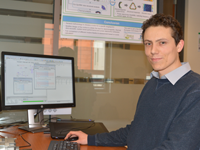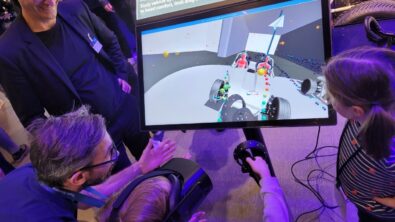Researcher of the month: Rémi Mongellaz

What you probably don’t know is that Siemens PLM Software is involved in a variety of international research programs around the globe – everything from safer, quieter and more efficient airplanes to electronic vehicle research. It is something we’ve been doing for years and it is a great way to incubate new concepts and ideas that later transform into market-ready products. It is an amazing place for young researchers and post-grad students to really push their limits in a business environment.
![2016-07-07 10_55_26-PowerPoint Slide Show - [Template Passeport].png 2016-07-07 10_55_26-PowerPoint Slide Show - [Template Passeport].png](http://blogs.sw.siemens.com/wp-content/uploads/sites/6/2019/09/2016-07-07-10_55_26-PowerPoint-Slide-Show-Template-Passeport-1.png)
 How did you end up at Siemens?
How did you end up at Siemens?
Actually, I did my internship in a company which was using LMS Imagine.Lab Amesim. I was working on a prototype of a component developed along with Siemens PLM Software. So I had interaction with the team in Lyon, and I naturally applied there after my studies.
 What is your project about?
What is your project about?
The project name is ARMEVA for Advanced Reluctance Motors for Electric Vehicle Applications. The purpose is to build an electric motor designed for an Electric Vehicle (EV).

The technology of motor used in this project has a lot of advantages: a high power density, low manufacturing costs, but also some constraints like strong vibrations. So we are trying to solve these Noise, Vibration, Harshness (NVH) issues while keeping a high efficiency of the motor.

I work on two different missions for this project:
-
- Define precisely the motor specifications.
-
- Compute the energy consumption of the machine.
These two aspects are essential to choose the specific design we will use for the motor.
We are working with another team of Siemens PLM Software in Leuven. It is specialized on the NVH phenomena and the way to reduce them. The project began 2.5 years ago and will end at the end of the year.
You can also go on the public website if you want more information: http://www.armeva-project.eu/
 Why did you choose this area?
Why did you choose this area?
I’m interested in multi-physics simulation; this is a primordial tool as all engineers need models to work with. On the project aspect, it is very stimulating to work on electric vehicles, which are, I think, the future of automotive.
 What is the craziest thing you have ever done as an engineer? (Keep it professional, please)
What is the craziest thing you have ever done as an engineer? (Keep it professional, please)
This year we had the possibility to assemble a team for the Hackathon, a Siemens PLM Software contest. We had 27 hours to create and build an innovative project. This was like a marathon for developers; we were a team of 5 who worked on it all day; it was intensive and kind of crazy!
 What is the best thing about your research project?
What is the best thing about your research project?
Without any doubt, the international part, the possibility to work with people who have a totally different point of view. I like to observe the way they deal with problems according to their own culture; this is very rewarding. I believe that cultural diversity allows us to work more efficiently on the project.
 What is the worst thing?
What is the worst thing?
I will not surprise anyone: all the administrative aspects.
 Do you think your work will really make a difference?
Do you think your work will really make a difference?
Of course, since we are defining what the e-motors of the future EVs will be.
 25 years from now, there will be:
25 years from now, there will be:
There will be intelligence everywhere! In factories, planes, vehicles, even in your home… It would be amazing to have a completely automatized factory. The entire configuration could be automatic and the factory could change in function of your needs.

What would you do differently, if you could?
Nothing, I am glad with the choices I made.
If you weren’t an engineer, what would you be?
If engineering did not exist, I would have chosen another creative job, like a carpenter.
 Will engineering change the world?
Will engineering change the world?
From my point of view, engineering changes the word continuously, so that will continue. Think about all the pieces of engineering you own: your smartphone, your car, your laptop…


